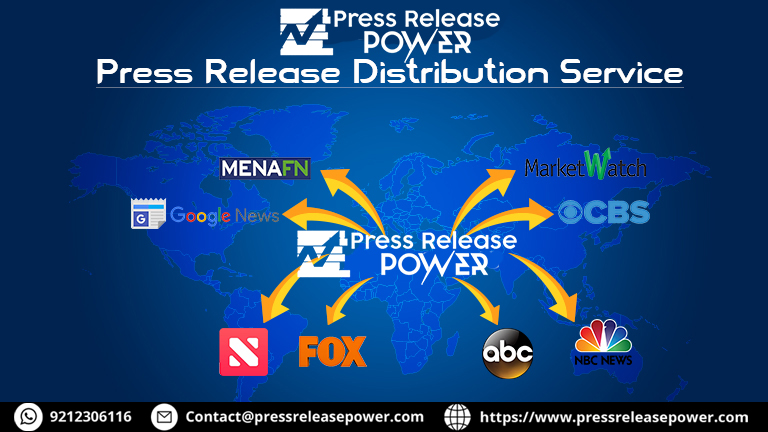In today’s competitive market, understanding your audience is more important than ever. A powerful tool for achieving this understanding is the creation of accurate buyer personas. These semi-fictional representations of your ideal customers play a critical role in shaping your branding strategies, ensuring that your messaging, products, and services align perfectly with customer needs and expectations.
Understanding the Importance of Buyer Personas
Why Buyer Personas Matter in Branding
Buyer personas are essential because they allow brands to focus on the needs, behaviors, and concerns of their target customers. Instead of relying on generic or broad marketing approaches, businesses can use personas to craft messages that speak directly to their audience's needs. This leads to:
- More Effective Marketing: Personas help tailor campaigns to specific customer groups, increasing engagement and conversion rates.
- Improved Customer Relationships: When brands understand their customers on a deeper level, they can offer solutions that resonate more effectively, fostering loyalty and trust.
The Impact on Brand Positioning
By using buyer personas, businesses can position their brands more strategically within the marketplace. Personas help clarify what sets the brand apart from competitors by identifying unique selling points (USPs) that matter most to the target audience. Brands like Nike, for instance, have excelled by developing personas that emphasize motivation, empowerment, and athleticism.
Gathering Data for Buyer Persona Development
Analyzing Existing Customers
The first step in creating buyer personas is to gather data from your existing customer base. This includes both quantitative data (demographics like age, gender, income) and qualitative insights (values, interests, challenges). Methods include:
- Surveys and Questionnaires: Direct feedback from customers about their preferences and behaviors.
- Interviews: In-depth discussions that provide a deeper understanding of customers’ motivations.
- CRM Analytics: Insights from sales data, customer interactions, and support queries.
Researching Market and Competitors
Beyond analyzing your current customers, it's important to explore the broader market landscape. By researching competitors’ audiences, industry trends, and emerging behaviors, you can develop personas that not only reflect your existing customers but also target potential ones.
Identifying Customer Pain Points and Needs
A key part of buyer persona development is understanding what your customers struggle with and what they need. You can gather this information through feedback tools such as customer service interactions, online reviews, and social media monitoring. Once these pain points are identified, your brand can position its products or services as solutions.
Segmentation and Persona Creation
Defining Key Segments
To create accurate personas, you must first segment your audience based on common characteristics. These segments might be based on:
- Demographics: Age, gender, education, income level.
- Psychographics: Lifestyle, values, interests, attitudes.
- Behavioral Factors: Purchase history, website interaction, brand loyalty.
After identifying key segments, prioritize those most aligned with your brand’s goals.
Building Detailed Buyer Personas
Each persona should have a detailed profile that captures key aspects of your target audience, including:
- Name, Age, Gender
- Occupation and Income
- Goals and Motivations
- Challenges and Pain Points
- Buying Behavior and Decision-Making Processes
For example, one persona might be "Marketing Michelle," a 35-year-old marketing director who seeks innovative solutions to improve customer engagement but struggles with tight budgets.
Validating and Refining Personas
Once you’ve developed your personas, it’s essential to validate them. This can be done by comparing the personas against real-world customer data to ensure they accurately reflect your audience. Over time, these personas should be refined based on new customer insights and changes in market conditions.
Applying Buyer Personas in Strategic Branding
Tailoring Brand Messaging
With well-defined personas, your brand messaging can be more focused. You’ll be able to speak to each persona’s specific needs and motivations. For instance, if a persona is cost-conscious, you can emphasize value for money in your marketing materials.
Examples of personalized messaging include:
- Value-Oriented Messaging for cost-conscious customers.
- Premium Positioning for luxury-seeking personas.
Designing Products/Services Around Personas
Buyer personas can also inform product development. Understanding what features or services your personas value most allows you to design offerings that meet their expectations. For instance, a software company might develop a user-friendly interface for personas that struggle with technology.
Enhancing Customer Experience
Personas help improve the customer journey by tailoring interactions at every touchpoint. From personalized email campaigns to targeted social media ads, buyer personas allow you to craft experiences that feel uniquely tailored. Brands like Amazon excel in this by using personas to recommend products and create personalized shopping experiences.
Measuring the Effectiveness of Buyer Personas
Setting KPIs and Metrics
To gauge the effectiveness of your buyer personas, you need to establish key performance indicators (KPIs). These can include:
- Customer Acquisition Cost (CAC): How much it costs to acquire a customer based on persona-driven campaigns.
- Conversion Rates: The percentage of leads generated from campaigns that are persona-targeted.
- Customer Lifetime Value (CLV): How much revenue you can expect from a customer over their relationship with your brand.
Analyzing and Adjusting Strategies
Regularly reviewing the performance of your buyer personas is crucial. If certain personas aren’t responding to your messaging or products as expected, you may need to adjust your approach or refine the persona to reflect new insights. For example, updating personas based on new consumer trends can keep your branding strategies relevant.
Final Thought
Accurate buyer personas are vital for any brand looking to build strong connections with its audience. They guide everything from messaging to product development, ensuring that every aspect of your brand resonates with the right people. By continuously refining and applying these personas, you can maintain a strategic edge and foster long-term customer loyalty.
Now is the time to take a step back, assess your audience, and start creating buyer personas that will elevate your brand to new heights.
Frequently Asked Questions (FAQ)
1. What is a buyer persona?
A buyer persona is a semi-fictional representation of your ideal customer based on market research and real data about your existing customers. It includes information such as demographics, behaviors, motivations, goals, and pain points.
2. Why are buyer personas important for branding?
Buyer personas are crucial for branding because they help you tailor your messaging, products, and services to meet the specific needs and preferences of your target audience. This leads to more effective marketing, stronger customer relationships, and a clearer brand identity.
3. How do I gather data to create buyer personas?
You can gather data for buyer personas by analyzing existing customer data, conducting surveys and interviews, using CRM analytics, and researching market trends and competitor strategies. The goal is to collect both quantitative and qualitative insights that accurately reflect your audience.
4. What are the key components of a buyer persona?
A detailed buyer persona typically includes:
- Name, age, gender
- Occupation and income level
- Goals and motivations
- Challenges and pain points
- Buying behavior and decision-making process
5. How many buyer personas should a brand have?
The number of buyer personas depends on the diversity of your audience and the complexity of your products or services. Most brands have between 3 to 5 personas, but it can vary. The key is to focus on the most significant segments of your audience.
6. How often should I update my buyer personas?
Buyer personas should be updated regularly, especially when there are significant changes in market trends, customer behavior, or your product offerings. Reviewing your personas at least once a year is a good practice, but adjustments can be made more frequently if necessary.
7. How can I validate the accuracy of my buyer personas?
You can validate your buyer personas by comparing them with real-world customer data, conducting feedback sessions with your sales and customer service teams, and using A/B testing in your marketing campaigns to see how different personas respond.
8. How do buyer personas influence product development?
Buyer personas guide product development by highlighting the features, services, and solutions that are most important to your target audience. This ensures that your offerings are aligned with customer needs and preferences, leading to higher satisfaction and loyalty.
9. Can small businesses benefit from buyer personas?
Absolutely. Even small businesses can benefit from creating buyer personas. They provide clarity on who your target customers are, enabling you to focus your limited resources on the most effective strategies for reaching and engaging them.
10. What tools can I use to create buyer personas?
There are several tools available to help create buyer personas, including:
- HubSpot’s Make My Persona: An interactive tool for building personas.
- Xtensio: A persona creator with customizable templates.
- SEMrush Persona: A tool integrated with SEMrush’s market research data. These tools can simplify the process of creating and refining your buyer personas.
Get in Touch
Website – https://www.webinfomatrix.com
Mobile - +91 9212306116
WhatsApp – https://call.whatsapp.com/voice/9rqVJyqSNMhpdFkKPZGYKj
Skype – shalabh.mishra
Telegram – shalabhmishra
Email - info@webinfomatrix.com

.jpg)
.jpg)





 English (US) ·
English (US) ·